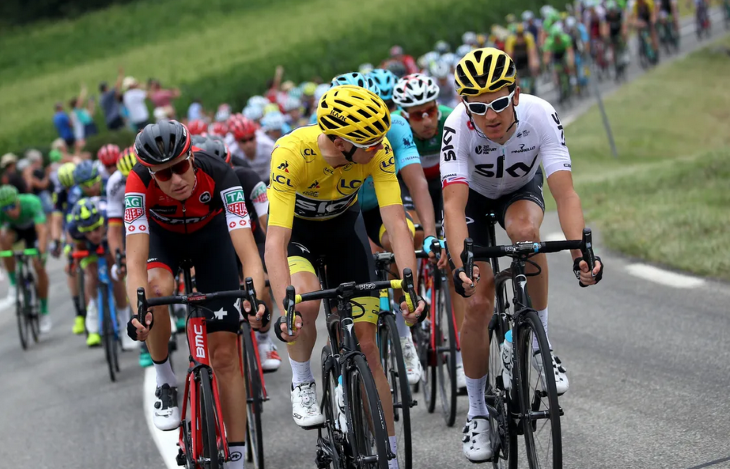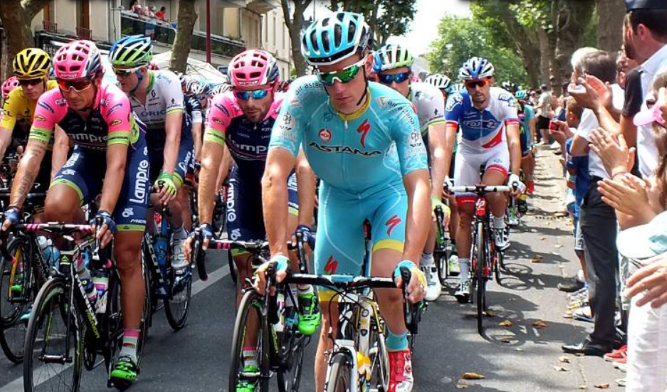Last Updated on July 15, 2024 by Emmanuel

The Tour de France happens in summer, during which many individuals take vacations to visit France and attend this famous cycling event worldwide.
However, this demanding racing event requires riders to push their physical and mental limits despite its glamorous side.
You might ask why the Tour de France is so brutal. This article examines what makes this sporting event the toughest.
Table of Contents
Why Is The Tour De France Challenging?
The Tour de France started in 1903 and became one of the most important cycling events globally.
This race includes twenty-one stages, the most complex and demanding for the riders.
Among the most TDF-challenging stages are mountain climbs that can last several hours.
Such stages make this race so brutal for riders because they are tested to their limits physically and mentally.
Moreover, the TDF is grueling due to its length and terrain; it requires tremendous stamina and mental toughness.
This cycling event is also brutally competitive because riders race against each other and the clock.
They typically have little time for rest or recovery during the three weeks.
Is the Tour de France devastating to the body?
The Tour de France happens in summer when temperatures in Europe are at the high picks.
Each rider has to keep an intense level of aerobic fitness and leg strength for several hours daily to keep up with the group.
This level of endurance riding takes a toll on each rider’s body, constantly dehydrating and suffering from cramps and other concerns.
Most have saddle sores, chafing, and fatigue throughout the race and continue until the end.
Besides, cyclists ride close to other riders; they face crashes, injuries, etc.
Has there ever been a death in the Tour de France
Unfortunately, there has been four life of competitors lost in the history of the Tour de France, but several spectators would also have been fatally injured, which is sad news.
Why do riders return to the Tour De France year after year?
Surprisingly, many riders say their challenge is to attend this event each year to face its difficulties until they retire.
Each rider tests his riding ability against the best ones in the world. The TDF requires a lot of determination and courage from the beginning to the end.
It is also a fantastic event, winding through some of the most scenic parts of France and a few surrounding countries.
Another reason riders keep coming back to the TDF is the camaraderie that develops between them.
It is a team event where riders form close bonds with their teammates as they suffer through the challenging stages together.
Remember also that these are professional riders whose job is to participate in cycling events worldwide.
They earn significant salaries and must continue attending such racing events until retirement.

What are the most challenging Tour de France stages?
One of the most complicated stages is the individual time trial, a race against the clock.
Riders must maintain high speeds to gain the best ranking position during this stage.
Other challenging stages include the mountain ones, with steep climbs that can sap a rider’s strength.
Sprint stages also require fast-paced finishes, making them the most challenging for sprinters and riders.
You can also check the Buzz electric tricycles that many adults enjoy riding in the cities.
How fast do Tour de France riders go uphill?
The TDF includes several mountainous stages requiring riders to push themselves to their limits.
Riders typically combine strength, endurance, and tactical prowess to succeed.
They go uphill at ten miles hourly speed, which can increase to twenty-five miles on the steepest sections.
Besides, some climbs vary, with an average of 3,000 feet long, making the ride more complicated.
For instance, the 17th stage of the TDF 2015 edition was a twenty-mile-long climb and increased to over 5,000 feet.
A rider with the most points in the climbing stages wins the Polka Dot Jersey.
At what speed do the Tour de France riders go downhill?
The average speed is around twenty-five miles hourly; it can increase on descending hills.
On a descent, riders can reach up to 60 miles per hour, which is unbelievable.
The gravity makes them go downhill at such a high speed. It pulls the rider and bikes down the hill, resulting in the cyclist using this force to speed up.
The faster a cyclist goes, the more force gravity requires him. Riders need practical skills to control their bikes suitably at high speeds.

Why do sprinters rarely win the Tour de France in the general classification category?
You are not alone in asking why sprinters are not the favorite to win the general classification or the TDF yellow jersey.
Indeed, sprinters specialize more in shorter distances than long ones, making them rarely win the overall classification category.
Riders must maintain high endurance over long distances in the Tour de France.
Despite being more powerful and explosive, they lack the necessary endurance to sustain their effort over several hours or days.
In addition, sprinters often lose time in the mountains, where lighter climbers take advantage of their lighter weight to power up steep grades.
How do Tour de France riders relieve pain?
Riders can use over-the-counter pain, like Ibuprofen, to alleviate discomfort.
They additionally employ topical analgesics, such as creams or gels, to deal with discomfort or use massage.
These techniques may help them through the trade event but don’t always bring lasting relief.
Riders should take a break when they feel pain and fatigue. Many stop training for a few days and resume after recovering.
Final Thoughts.
The Tour de France combines long distances, mountain climbs, descents, an against-the-clock stage, etc.
The elevation changes and rugged terrain are complicated for the riders, who must constantly adjust to them, which can affect their bodies.
Furthermore, high winds and cold temperatures complicate thsi racing event.
That’s all about this article explaining why the Tour de France is so brutal. We hope you find it valuable.
Leave a Reply